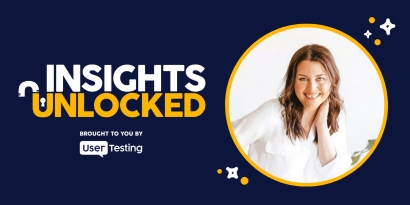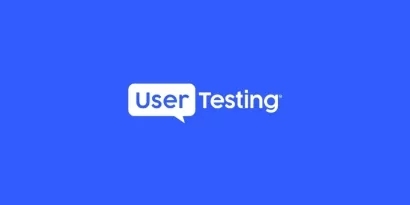
Episode 48 | July 12, 2022
Conflict management as a UX design leadership skill
Discover why conflict management is a vital skill for UX leaders with Susana La Luz-Hawkins of JP Morgan Chase on Insights Unlocked.
The missing skill in UX design leadership: Conflict management
You can have the best wireframes and research in the world—but if you can't navigate team disagreements, your designs may never reach their full potential.
In a recent episode of Insights Unlocked, Susana La Luz-Hawkins, Research Department Director of Design & Customer Experience at J.P. Morgan Chase, shares why conflict management in design is a critical skill for UX leaders.
Rethinking conflict in design
“Conflict has a really negative connotation and it shouldn’t,” Susana explains. “We want conflict. We need conflict in order to challenge ourselves to move towards better solutions.”
As teams grow and the stakes increase, so does the complexity of collaboration. Design leaders need to embrace healthy conflict in UX as a source of diverse perspectives—not a threat to harmony. Avoiding conflict can lead to “design by committee,” where compromises water down innovation.
ON-DEMAND WEBINAR
Continuous discovery: transform your product development process
Tools for navigating design disagreements
Susana’s interest in design conflict resolution began with her master’s thesis, which explored integrating conflict negotiation into the convergent stages of the design process. She highlights the Thomas-Kilmann Instrument as a useful tool for identifying personal conflict styles—such as collaborator, avoider, or accommodator.
Another game-changing resource? Crucial Conversations. “That book fundamentally got me to understand how to have really basic everyday conversations in a more effective way, let alone the difficult ones,” she says.
These tools help teams respond to the why behind opposing views—critical for UX team communication and collaborative design.
Compromise vs. collaboration
It’s easy to settle on a quick compromise, but Susana argues that true collaboration requires more. She offers a compelling analogy: “Compromise is splitting the pie. Collaboration is realizing you wanted the pie, but I just needed a sandwich.”
By understanding the underlying needs of stakeholders—not just their stated wants—designers can craft solutions that truly satisfy. This level of UX leadership demands curiosity, empathy, and a willingness to go beyond surface-level agreements.
The role of research in conflict resolution
Susana points to qualitative and quantitative research in UX as essential tools for untangling disagreement. While quantitative data tells us what users are doing, qualitative insights reveal why they behave that way.
She emphasizes the value of co-creation and participatory design methods as ways to bring stakeholders into the process and diffuse tension through shared discovery.
- Use qualitative research to uncover emotional drivers and mental models
- Use quantitative research to validate ideas and build consensus
- Combine both to create a full picture that supports collaboration
Leading with empathy and intention
As organizations scale, Susana believes conflict management should be considered a core design skill—not a soft one. “It’s really critical that we start teaching conflict management in design schools,” she says. “Designers need to become the leaders facilitating the design process.”
Her perspective underscores a shift in UX: from craftsperson to leader, from decorator to diplomat.
“We’re not just a wizard behind the curtain,” Susana said. “It really is about understanding people, understanding context, and driving for a solution.”
Episode links:
- Build high performing design teams that drive conversions: Explore strategies to foster collaboration, eliminate decision-making roadblocks, and ensure every design choice is backed by actionable data. This webinar delves into building and scaling teams that prioritize customer insights to maximize conversion rates.
- Unlocking audience insights: driving smarter decisions across product, marketing, and UX: This guide provides methodologies for collecting and applying customer feedback to inform smarter business decisions, emphasizing the importance of understanding customer needs in design processes.
- Unlocking your UX superpowers to lead and build influence: In this episode, Kuldeep Kelkar discusses how UX researchers can build influence, convert challenges into opportunities, and lead within their organizations, resonating with themes of leadership and conflict navigation.
- 3 tips for resolving internal design disputes: This blog post offers practical advice on navigating and resolving design disagreements, emphasizing the value of user feedback and collaborative decision-making.









